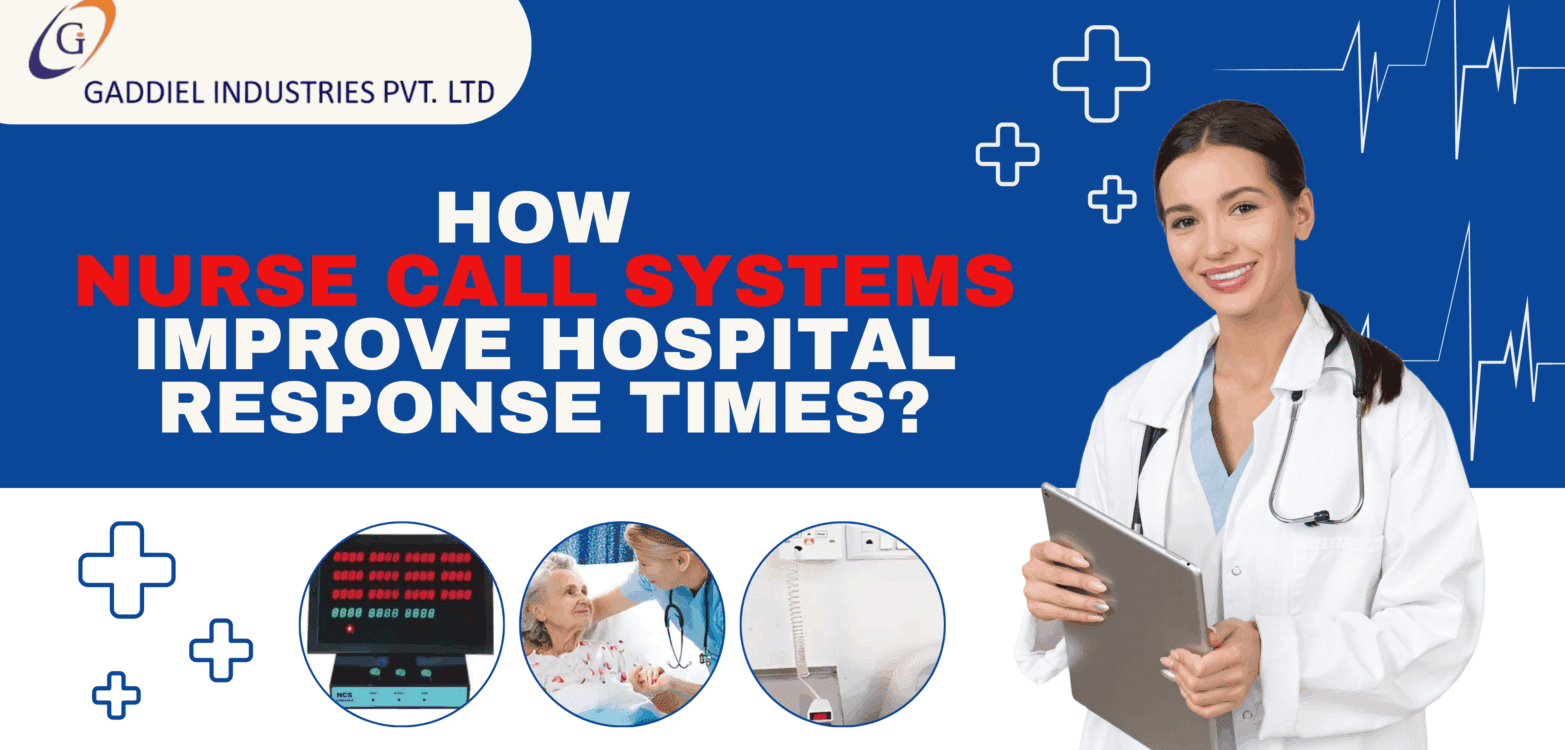
31
OctIn today’s healthcare climate, communicating between patients and medical professionals is essential to save lives. Due to the high-pressure environment of a hospital, quick call times may have a large impact on patient outcomes. Innovation introduced to improve safety and efficiency in hospitals is a nurse call system.
What Are New Nurse Call Systems?
New nurse call systems are intelligent communication networks that create instantaneous communication between patients, nurses, and staff. They not only use a system of buttons to signal, but also incorporate digital, wireless, and IoT-based technology to get a faster response and improve coordination in caregiving.
Categories of Contemporary Call Systems for Nurses:
Cabled Nurse Call Systems –
Established using structured cables, these systems are best for bed-to-nurse station communication for big hospitals looking for stability and reliability.
Wireless Nurse Call Systems –
Can be established with Wi-Fi or radio frequency which allows ease of installation and scalability to care facilities.
IP-Based Nurse Call Systems –
Connect devices through data and internet protocols and enjoy centralized monitoring of devices and data analytics.
Touchscreen & Smart Panel Systems –
Supply current visibility of patient requests, calls in priority order, and provider availability.
These systems are also an aspect of smart hospitals, where technology and automation are the foundation of operating efficiently and safeguarding patients and employees.
Advantages of a Nurse Call System in Hospital Operations –
1. Quicker Response Time
By far the most important benefit of nurse call systems is the ability to alert staff members in real time.
2. Improved Patient Satisfaction
Beyond the efficiency related to any of many variations of nurse call systems, patients appreciate immediate assistance. Each time a patient requires assistance and receives prompt response, they are more likely to trust the hospital more. Nurse call systems allow hospitals to build up higher patient satisfaction scores and reviews.
3. Patient Call Units
Typically located next to the patient’s bed, the patient call units enable the patient to call for help via a button or touch interface. Patients’ call units can also incorporate voice communication and visual indicators.
4. Over-Door Lights or Corridor Displays
Visual indicators that show which room or bed has raised a call, enabling the nurse to locate the patient.
5. Nurse Station Console
A centralized console that displays all current alerts with room number, call priority level and response tracking.
6. Wireless Handsets/Mobile Devices
Alert notifications can go to mobile devices, allowing an even quicker response even if the nurse is not at the nurse console.
7. Software Dashboard
Provides real-time visibility of alerts, call logs, response analytics, and system reporting for assessing performance.
Most Frequent Problems with Nurse Call Systems
Even the best nurse call systems can encounter issues that impact communication and effectiveness. Here are a few common problems:
Failure of the System or Network – A power failure, bad Wi-Fi signal, or malfunction of hardware can impact nurse call systems.
False Alerts or Calls that no One Acknowledges – These incidents can be caused by a problem with the button or by an error in the configuration of the system.
Delayed Alerts – A network busy with other communications or having an outdated software package can impact timeliness of alerts.
Audio or Voice Problems – In a two-way communicative system, distorted audio can make it difficult to understand anyone.
Nonfunctional Call Panels – If the panels are used improperly and not frequently maintained, touchscreen buttons or physical buttons can go bad over time.
Perform Routine Testing
Test all the console lights, patient units, and any other notifications that you have installed, typically on a daily or weekly basis, for proper operation.
Watch Connectivity
For IP (internet protocol) or wireless systems, watch the Wi-Fi signal strength for adequate coverage, check all cables, and assess all other connections to ensure that you pay attention to connectivity with your nurse or alarm system.
Examine Power Sources
You should also ensure to have working back-up power supplies (UPS) at all times in case of power failure or outage.
Regularly Upgrade Software
Keep any firmware and the management software up-to-date at all times with the appropriate upgrades and patches to avoid bugs or performance issues for your nurse or alarm system.
Read Related – Modular Operating Room: Layout, Design & Specifications
Conclusion
In hospitals, the nurse call system is much more than a call for help…it is an essential basis of communication to provide safety, speed, and responsiveness. Newly developed nurse call systems include smart sensors, wireless connectivity, and real-time analytics to improve the responsiveness of healthcare professionals to the patient’s needs.




